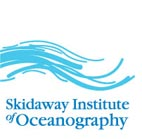
Orange Coast College (OCC) is a public community college in Costa Mesa in Orange County, California. It was founded in 1947, with its first classes opening in the fall of 1948. It provides Associate of Art and Associate of Science degrees, certificates of achievement, and lower-division classes transferable to other colleges and universities. The college enrolls approximately 24,000 undergraduate students. In terms of population size, Orange Coast College is the third-largest college in Orange County.

Whitman College is a private liberal arts college in Walla Walla, Washington. The school offers 53 majors and 33 minors in the liberal arts and sciences, and it has a student-to-faculty ratio of 9:1.

The University of Akureyri was founded in 1987 in the town of Akureyri in the northeastern part of Iceland. It is today a school of health sciences, humanities and social science, and a school of business and science. Over 2000 students attended the university in the autumn semester of 2014, around half of them through flexible learning, making the university the largest provider of distance education in the country. The University of Akureyri coordinates with other Icelandic Universities to operate the University Centre of the Westfjords located in Ísafjörður, which operates two master's degrees, one in Coastal and Marine Management and the other in Marine Innovation. Additionally, The University of Akureyri coordinates with other Nordic Universities for the West Nordic Studies and Polar Law Masters programs.

College of the Atlantic (COA) is a private liberal arts college in Bar Harbor on Mount Desert Island, Maine. Founded in 1969, it awards bachelors and masters (M.Phil.) degrees solely in the field of human ecology, an interdisciplinary approach to learning. Focus areas include arts and design, environmental sciences, humanities, international studies, sustainable food systems, and socially responsible business. The College of the Atlantic is accredited by the New England Commission of Higher Education.
Stony Brook Southampton is a campus location of Stony Brook University, located in Southampton, New York between the Shinnecock Indian Reservation and Shinnecock Hills Golf Club on the eastern end of Long Island.

The University of Alaska Fairbanks is a public land-, sea-, and space-grant research university in College, Alaska, a suburb of Fairbanks. It is the flagship campus of the University of Alaska system. UAF was established in 1917 and opened for classes in 1922. Originally named the Alaska Agricultural College and School of Mines, it became the University of Alaska in 1935. Fairbanks-based programs became the University of Alaska Fairbanks in 1975.
The University of Alaska Southeast is a public university with its main campus in Juneau, Alaska and extended campuses in Sitka and Ketchikan. It is part of the University of Alaska System and was established on July 1, 1987, with the restructuring and consolidation of the former University of Alaska Juneau, Ketchikan Community College, and Islands Community College (Sitka). The university is accredited by the Northwest Commission on Colleges and Universities.

Eleuthera refers both to a single island in the archipelagic state of the Commonwealth of the Bahamas and to its associated group of smaller islands. Eleuthera forms a part of the Great Bahama Bank. The island of Eleuthera incorporates the smaller Harbour Island. "Eleuthera" derives from the feminine form of the Greek adjective ἐλεύθερος (eleútheros), meaning "free". Known in the 17th century as Cigateo, it lies 80 km east of Nassau. It is long and thin—180 km long and in places little more than 1.6 km wide. At its narrowest point, the Glass Window Bridge, which has been called the narrowest place on earth, Eleuthera stands 30 feet wide. Its eastern side faces the Atlantic Ocean and its western side faces the Great Bahama Bank. The topography of the island varies from wide rolling pink sand beaches to large outcrops of ancient coral reefs and the highest elevation point is 200 feet. The population is approximately 11,000 and the principal economy of the island is tourism.
The Rosenstiel School of Marine, Atmospheric, and Earth Science is the University of Miami's academic and research institution for the study of oceanography, atmospheric, and earth sciences.
Texas A&M University at Galveston (TAMUG) is an ocean-oriented branch campus of Texas A&M University offering both undergraduate and graduate degrees. Students enrolled at Texas A&M University at Galveston, known affectionately as 'Sea Aggies', share the benefits of students attending Texas A&M University (TAMU) campus in College Station. TAMUG is located on Pelican Island, offering benefits for its maritime focused majors.

The Samuel Curtis Johnson Graduate School of Management is the graduate business school in the SC Johnson College of Business at Cornell University, a private Ivy League university located in Ithaca, New York. It was founded in 1946 and renamed in 1984 after Samuel Curtis Johnson, founder of S.C. Johnson & Son, following his family's $20 million endowment gift to the school in his honor—at the time, the largest gift to any business school in the world.

The University of The Bahamas (UB) is the national public institution of higher education in the Commonwealth of The Bahamas with campuses throughout the archipelago. The main campus is located in the capital city of Nassau, on the island of New Providence.
Williams–Mystic, the Ocean and Coastal Studies Semester of Williams College and Mystic Seaport Museum, is an interdisciplinary semester program based at the Mystic Seaport Museum in Mystic, Connecticut.

Dr. Betsy Vogel Boze, is an American academic and higher education administrator who is currently serving as the ninth President of The College of The Bahamas. Previously, she worked as a professor of marketing, department chair, dean, and CEO of Kent State University at Stark, before serving as the president of The College of The Bahamas. She is a senior fellow at the American Association of State Colleges and Universities (AASCU), that researches alternative revenue streams for public colleges and universities.

The College of Biological Sciences (CBS) is one of seven freshman-admitting colleges at the University of Minnesota. Established in 1869 as the College of Science, the College of Biological Science is now located across both the Minneapolis and the St. Paul campuses. As of June 29, 2023, the dean of the College of Biological Sciences is Dr. Saara J DeWalt.

The University of Georgia Skidaway Institute of Oceanography (SkIO) is a marine science research and education institute located on Skidaway Island near Savannah, Georgia, USA. UGA Skidaway Institute faculty conduct oceanographic research across all the major marine science disciplines, and from the waters and marshes adjoining the campus to around the world. They teach, advise and mentor both undergraduate and graduate students on the UGA Skidaway Marine Science Campus and on the university’s main campus in Athens. Institute resources include state-of-the-art research laboratories and instrumentation, and the 92-foot research vessel Savannah.

The Oregon Institute of Marine Biology is the marine station of the University of Oregon. This 100-acre (0.40 km2) marine station is located in Charleston, Oregon at the mouth of Coos Bay. Currently, OIMB is home to several permanent faculty members and a number of graduate students. OIMB is a member of the National Association of Marine Laboratories (NAML). In addition to graduate research, undergraduate classes are offered year round, including marine birds and mammals, estuarine biology, marine ecology, invertebrate zoology, molecular biology, biology of fishes, biological oceanography, and embryology.
The School for Field Studies (SFS) is the United States' largest environmental study abroad program provider for undergraduate college students, offering fully accredited semester- and summer-long academic programs in over 10 countries around the world. SFS students and staff conduct field research, driven by strategic research plans, to address environmental issues which affect both the communities in which the organization operates and the world in general. More than 18,000 students have studied abroad with SFS since it was founded in 1980. SFS is a 501(c)(3) non-profit organization, currently based out of Beverly, Massachusetts.

The Virginia Institute of Marine Science (VIMS) is one of the largest marine research and education centers in the United States. Founded in 1940, VIMS is unique among marine science institutions in its legal mandate to provide research, education, and advisory services to government, citizens, and industry. Funding for VIMS comes from the Commonwealth of Virginia, grants and contracts from federal and state agencies, and private giving. The School of Marine Science (SMS) at VIMS is the graduate school in marine science for the College of William & Mary. VIMS offers M.S., Ph.D., and professional M.A. degrees in marine science. The school has 52 faculty members, an enrollment of 80-100 students, and includes 4 academic departments. VIMS' main campus is located in Gloucester Point, Virginia.
A semester school is a school that complements a student's secondary education by providing them with the opportunity to step out of their regular school for half an academic year and step into a uniquely different educational setting while continuing their required academic studies. The academic curriculum at semester schools tends to be college preparatory, interdisciplinary, and experiential.














